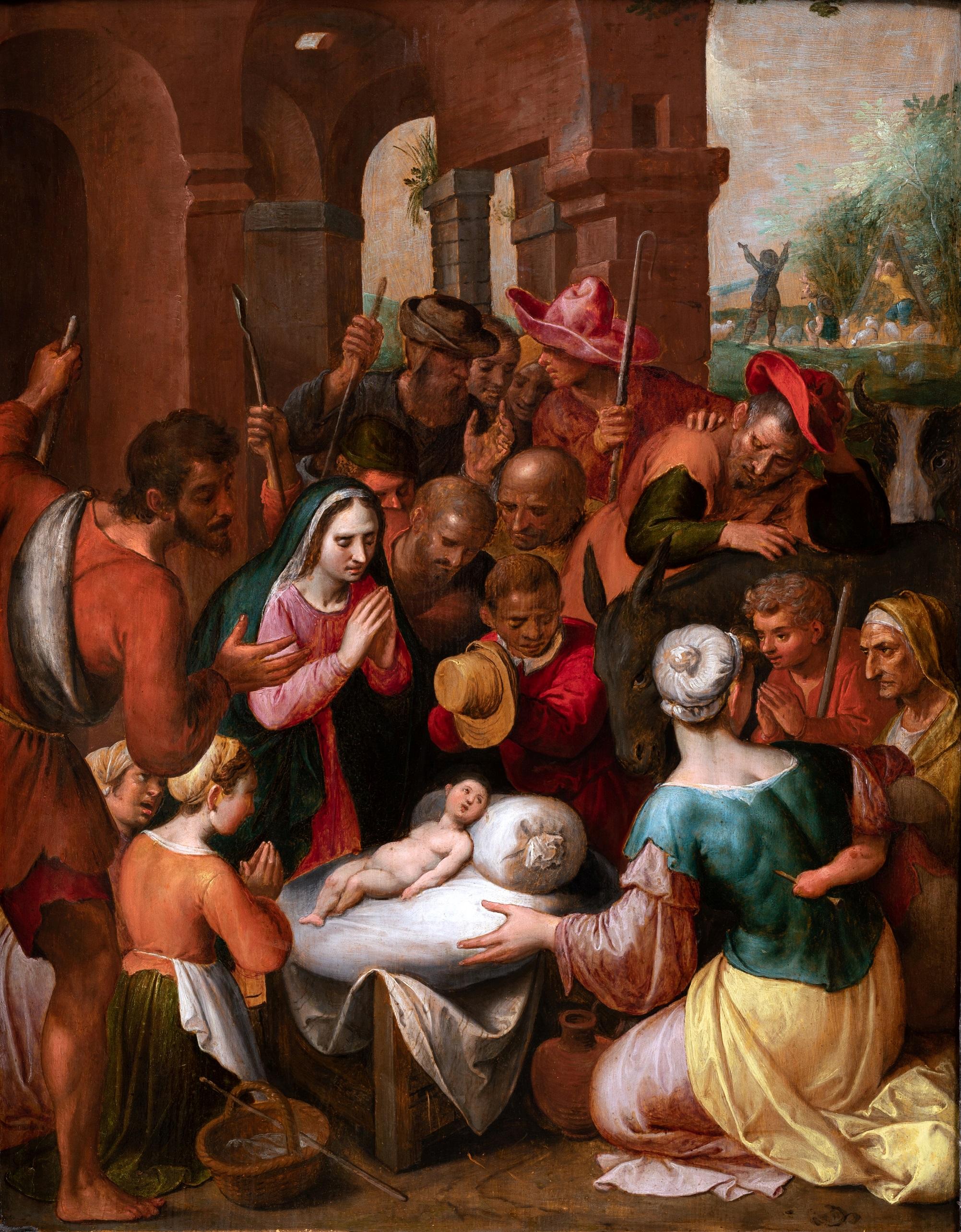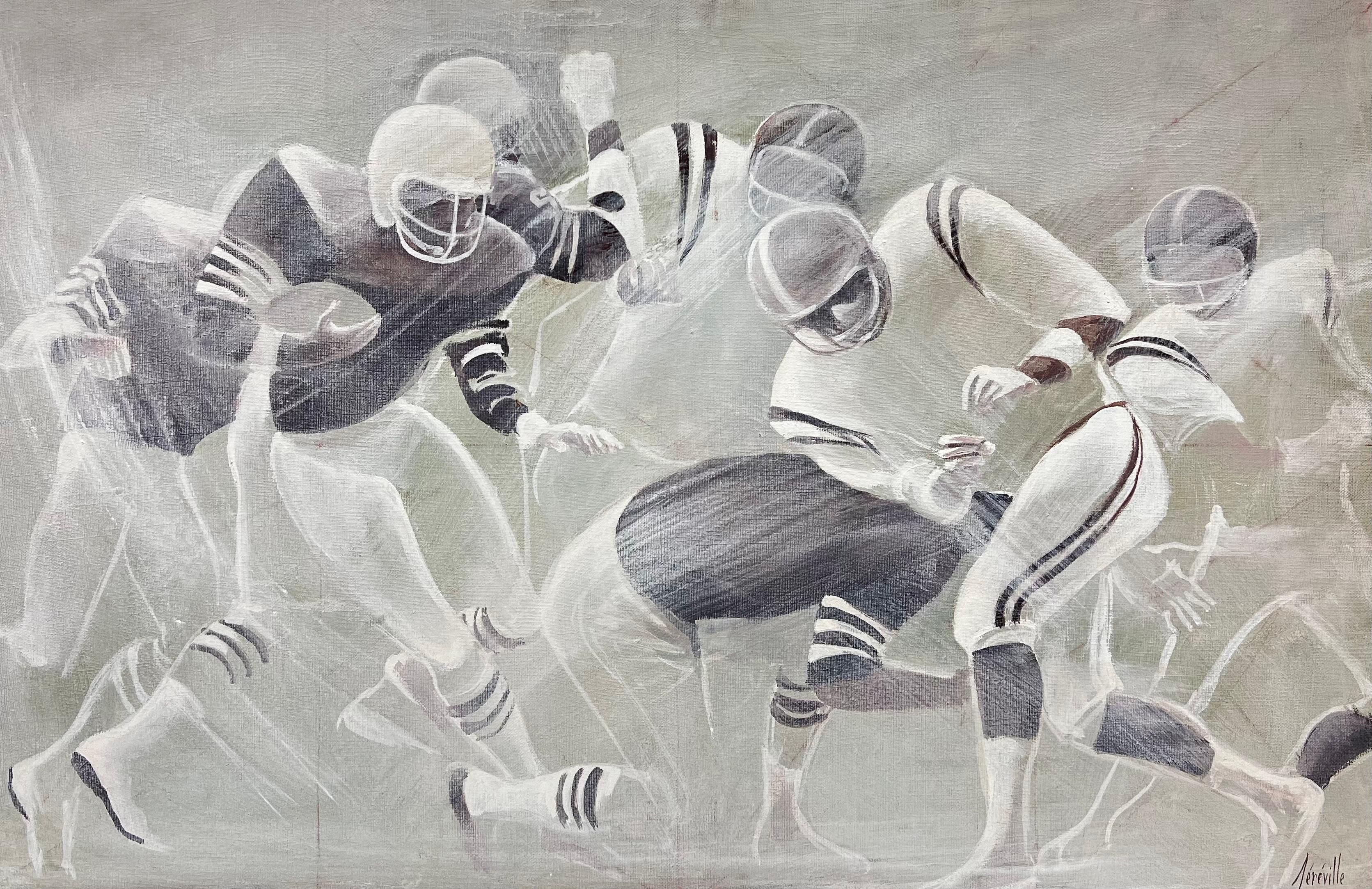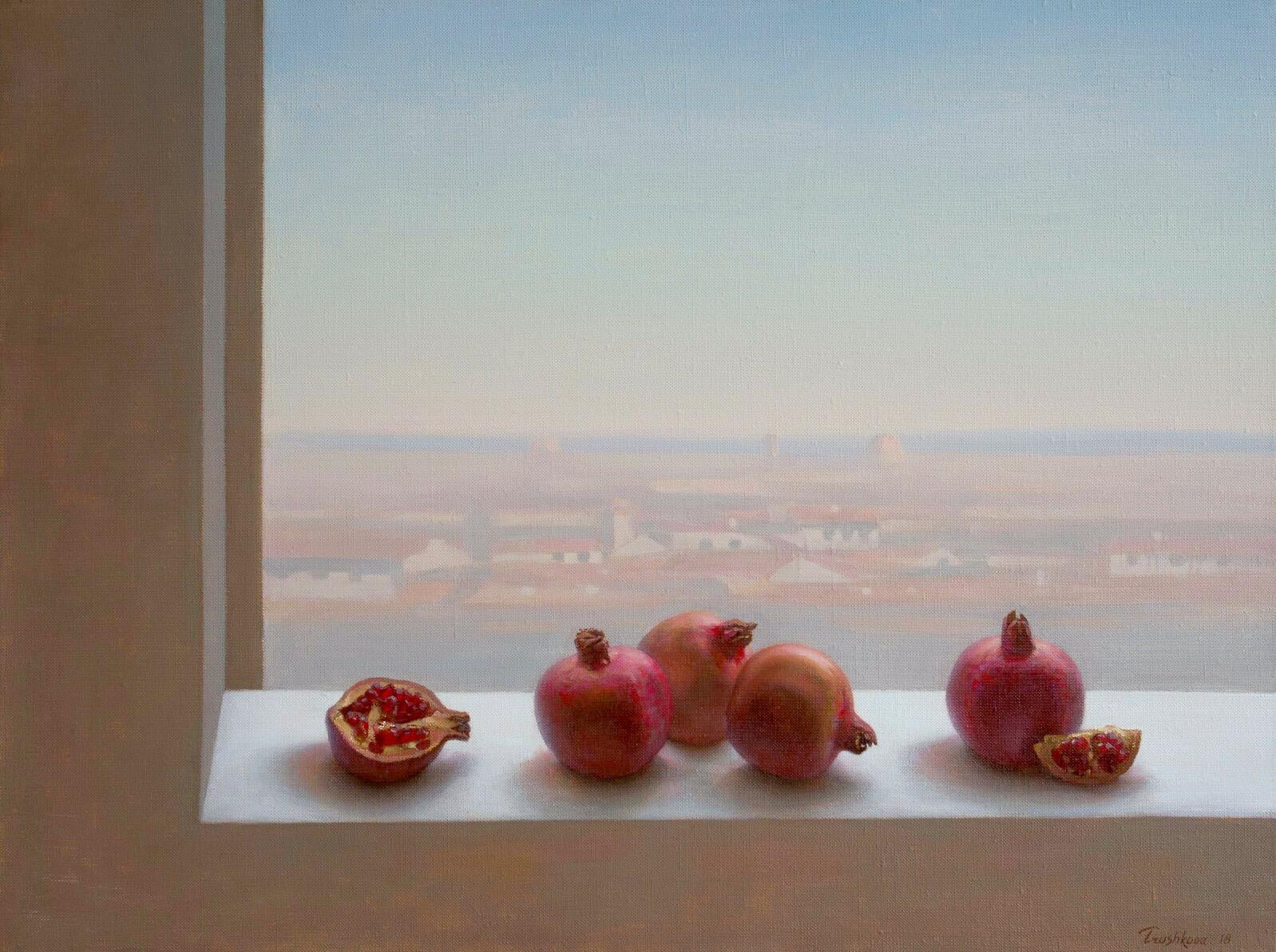Items Similar to The Battle of Flodden, English School Early 20th Century Oil, Knights
Want more images or videos?
Request additional images or videos from the seller
1 of 5
UnknownThe Battle of Flodden, English School Early 20th Century Oil, Knights1910
1910
About the Item
English School
1910
The Battle of Flodden
Oil on canvas, monogrammed and dated 1910 lower right
Image size: 25 x 50 inches (63.5 x 127 cm)
Original frame
Provenance
Dacre Castle
The Battle of Flodden or Flodden Field, sometimes called the Battle of Branxton was part of a conflict between England and Scotland. The Scots were allied with France and at the time of the battle Henry VIII was in France fighting there and had left his kingdom under the regency of his queen Catherine of Aragon.
The battle was fought in Branxton in Northumberland on 9 September 1513, between an invading Scots army under King James IV and an English army commanded by the seasoned warrior Thomas Howard, Earl of Surrey.
Invoking the Auld Alliance with France, James IV of Scotland crossed the Tweed with a large well-equipped army. He took Norham, Etal and Ford Castles and established a stronghold a mile to the south of here, on Flodden Hill.
Surrey marched his forces north but avoided the Scottish position with a wide flanking move to the east, making his approach to the Battle from the north, via Twizel Bridge.
James was forced to relinquish his fortifications and move his troops and heavy cannon to the ridge of Branxton Hill. The English lines spread out west to east along the ridge on which Branxton stands.
Battle commenced in the late afternoon of 9th September 1513, when the Scots' guns opened fire. It was dull, damp and muddy, having rained for most of the day.
In the following hours, these fields became the scene of bloody carnage in which an estimated 4,000 Englishmen and 10,000 Scottish lost their lives.
The English won a resounding victory, King James IV was killed in the battle and body is reputed to have been sent in a coffin to Catherine who in turn sent the Scottish king’s coat to Henry VIII in France to use as a banner in the war there.
In the painting we can see various heraldic banners, such as the ones listed below.
The banner showing a red field with the white lion marked with a blue crescent represents Thomas Howard, 2nd Duke of Norfolk (or possibly Edmund Howard, future 3rd Duke of Norfolk)
The gold and green field, with the gold falcon eating a baby represents Edward Stanley, 1st Baron Monteagle KG
The gold and blue field, with a red bull represents Thomas Dacre, 2nd Baron Dacre of Gilsland, KG.
- Creation Year:1910
- Dimensions:Height: 25 in (63.5 cm)Width: 50 in (127 cm)Depth: 5 in (12.7 cm)
- More Editions & Sizes:1 of 1Price: $12,257
- Medium:
- Period:
- Condition:
- Gallery Location:London, GB
- Reference Number:1stDibs: LU5248234562
About the Seller
5.0
Vetted Seller
These experienced sellers undergo a comprehensive evaluation by our team of in-house experts.
Established in 2007
1stDibs seller since 2014
64 sales on 1stDibs
Typical response time: 2 hours
- ShippingRetrieving quote...Ships From: London, United Kingdom
- Return PolicyA return for this item may be initiated within 14 days of delivery.
More From This SellerView All
- William, 1st Viscount Bateman and FamilyLocated in London, GBOil on canvas Image size: 24 x 18 1/2 inches (61 x 47 cm) Gilded wood framed Provenance Estate of Judge Davis Norton and Florence Edelstein. William Bateman was a British Whig politician who sat in the House of Commons between 1721 and 1734. He was made Knight Companion of the Order of the Bath...Category
Early 18th Century Figurative Paintings
MaterialsOil, Canvas
- Ophelia, Victorian 19th Century Royal Academy Oil PaintingLocated in London, GBOil on canvas, signed lower right Image size: 33 1/2 x 56 1/2 inches (85 x 143 cm) Original gilt frame Provenance With the artist's son, Millie Dow Stott Esq., until 1912. Artist's Studio Sale, Christies, November 1913. Private Collection Exhibitions London, Royal Academy, 1895, no. 679. Paris, Societe de la Nationale des Beaux-Arts, 1896, no. 1179. Berlin, VII Internationale Kunstausstellung 1897. no. 3533. Manchester, City of Manchester Art Gallery, 1912, no. 339. In the 1890s William Stott exhibited regularly at the Royal Academy, mainly highly decorative works with subjects derived from classical mythology and literature. This painting was Stott's 1895 entry to the Royal Academy and was subsequently exhibited at the Paris Salon of 1896 and then on to the Berlin, VII Internationale Kunstausstellung 1897. Shakespeare was a favourite source for Victorian painters, and the tragic romance of Ophelia, from Hamlet, was an especially popular subject, featuring regularly in the Royal Academy exhibitions. The most popular and iconic image of Ophelia's death was, and is to this day, John Everett Millais's 1851 painting showing the confused and tragic Ophelia floating downstream on her back in a state of mad ecstasy, arms raised in a gesture of inevitable submission. However, although Stott chose not to pastiche this image, it seems highly likely that he was prompted to take up this subject, which had almost become a 'rite of passage' among Victorian painters, by the fact that in 1894 Millais's Ophelia was presented to the National Gallery of British Art by Sir Henry Tate. It appears that Stott was much influenced by John William Waterhouse...Category
Late 19th Century Victorian Figurative Paintings
MaterialsOil, Canvas
- The Choir Boys, 17th Century Italian SchoolLocated in London, GBOil on canvas Image size: 22 x 33 1/2 inches (56 x 85 cm) This is a half portrait of two choir boys wearing white ruffs at their necks, looking down as the...Category
17th Century Figurative Paintings
MaterialsOil, Canvas
- Summer Haze, Early 20th Century Original OilBy David Forrester WilsonLocated in London, GBDavid Forrester Wilson 1873 - 1950 "Summer Haze" Oil on canvas, signed lower left Image size: 18 x 24 inches Original gilt frame David Forrester Wilson's sensitive portrayal of ...Category
Early 20th Century Figurative Paintings
MaterialsOil, Canvas
- Sleeping Angel, English School 19th Century Reclining Figure OilLocated in London, GBEnglish School 19th Century Sleeping Angel Oil on canvas Image size: 29 x 40 inches Contemporary gilt frameCategory
19th Century Figurative Paintings
MaterialsOil, Canvas
- London Costmongers, Urban 20th Century English OilLocated in London, GBAttributed to Mary Adshead 1904 - 1995 London Costmongers Oil on canvas Image size: 30 x 36 inches Framed Costermongers were London people that sold fruit and veg and other ‘perishables’ from barrows. Often wheeling and then stationing their barrow on the street, so their customers could easily come and buy from them. Costermongers were fiercely independent, rebellious in their dress and outlook, and had little time for ‘middle class moralising’ and attempts to suppress or restrict their way of life. (Much like modern teenagers) The men depicted stop work for a break with cups of tea and a few read the newspapers. Next to the man with the yellow apron can be seen some cakes on a plate. A work place , a factory can be seen in the distance on the right. It is possible that the painting depicts a cabmen's shelter, as some did serve outside and many still survive today in London. The style of the painting is very much that of a student of the Slade School in London and has similarities with other artists work such as James Batemen or Herbert Ashwin Budd. On the back of the painting it has in chalk the name 'Rhoades', which could refer to the artist Geoffrey Hamilton Rhoades...Category
20th Century Figurative Paintings
MaterialsOil, Canvas
You May Also Like
- French Surrealist Oil Painting Cubist Figurative Scene 20th centuryLocated in Cirencester, GloucestershireFigurative Abstract French School, signed oil painting on board framed: 21.25 x 30.75 inches canvas: 20.5 x 30 inches The painting is in overall good condition, bar an age related pa...Category
20th Century Surrealist Figurative Paintings
MaterialsOil
- Cercle of Ambrosius Francken, Adoration of the shepherds, 17th century AntwerpLocated in PARIS, FRAdoration of the shepherds, Cercle of Ambrosius Francken, Early 17th century Antwerp school Oil on oak panel: h. 55 cm, w. 43 cm (21.65 in x 16.93 in) 17th c. ebonized and moulded f...Category
Early 17th Century Old Masters Figurative Paintings
MaterialsOil, Wood Panel
- Fate Challenge I (lady climber wildcat brown earth tones yellow ochre mauveBy Rudolf KosowLocated in Quebec, QuebecIn "Fate challenge II“ a mountaineer is eagerly climbing a steep rock ledge because she has seen something from a distance that she could not explain and is planning to find out. Alt...Category
2010s Surrealist Figurative Paintings
MaterialsCanvas, Oil
- 17th century Italian figure painting - Fall of Fetonte - Oil on copper LandscapeLocated in Varmo, ITRoman master (c. 1650) - The Fall of Phaeton. 40.5 x 52.5 cm without frame, 56.5 x 59.5 cm with frame. Oil on copper, in carved and gilded wooden fra...Category
Mid-17th Century Baroque Figurative Paintings
MaterialsCopper
- American Soccer Game, Dramatic 20th century Oil Painting, signed 1980's periodLocated in Cirencester, GloucestershireArtist/ School: French School, circa 1988, signed and inscribed verso Title: American Soccer players Medium: oil on canvas, framed Framed: 24 x 37 inches Canvas : 23.75 x 36.5 i...Category
Late 20th Century Modern Figurative Paintings
MaterialsOil
- Florence -original still life painting-original realism still life oil paintingLocated in London, Chelsea"Florence," a captivating Impressionistic masterpiece by the talented artist Irina Trushkova, beautifully captures the essence of one of the world's most enchanting cities. Rendered ...Category
21st Century and Contemporary Photorealist Still-life Paintings
MaterialsCanvas, Oil




